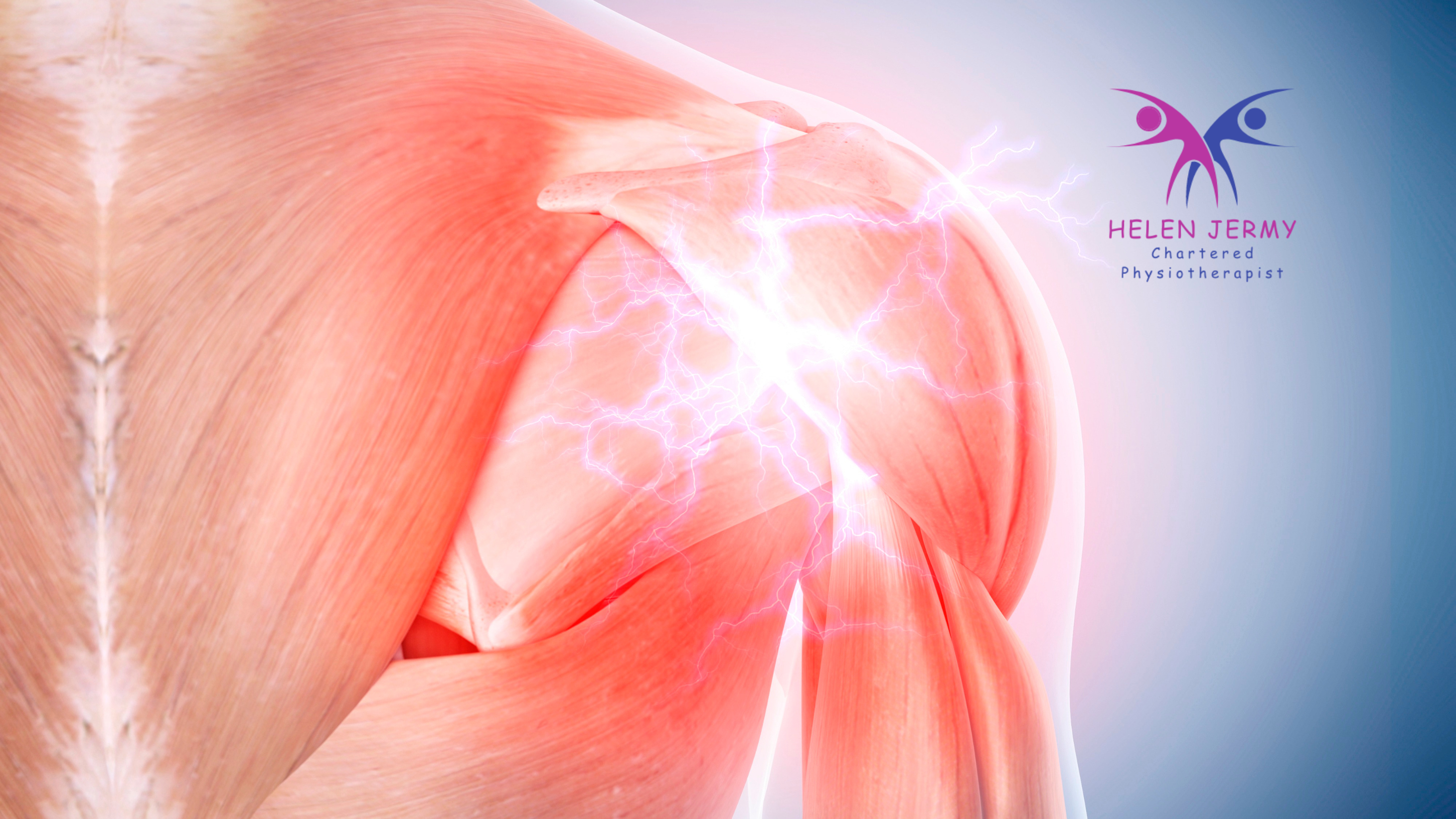Frozen Shoulder
Frozen Shoulder

A Frozen shoulder or adhesive capsulitis, is typically a combination of some or all of the following ;
- stiffness
- pain, often worse at night
- limited range of motion in the shoulder joint.
Cause
Research has not yet determined exactly why some people develop frozen shoulders but it appears to be caused by an over-reaction of the immune system.
This massive inflammatory reaction (inflammation) in the shoulder causes adhesions, fibrosis and thickening of the capsule and ligaments that surround the shoulder joint which causes restriction of the space inside the shoulder joint, limiting range of movement and causing pain.
Frozen shoulders often develop insidiously ( with no apparent cause or injury ) however they may be triggered by a trauma or injury to the shoulder.
Having an auto-immune condition such as rheumatoid arthritis may be a risk factor, along with age, diabetes, very high cholesterol, thyroid disease and after having a stroke.
Women between the ages of 40 and 60 seem to suffer with frozen shoulders more often than men. While there isn’t a proven link to the menopause, hormonal factors, including changes in oestrogen levels, may contribute to its development or exacerbation.
- Oestrogen receptors are present in the connective tissues of the shoulder joint, including the joint capsule and ligaments. Oestrogen helps maintain the integrity and elasticity of connective tissue. Changes in oestrogen levels can affect the quality and function of the connective tissues, which may lead to increased stiffness and reduced flexibility in the shoulder joint, contributing to frozen shoulder symptoms.
- Oestrogen is known to have anti-inflammatory properties. Reduced oestrogen levels, can lead to a relative increase in inflammation within the shoulder joint which may contribute to the development of frozen shoulder, causing pain and restricting joint movement.
- Changes in oestrogen levels can alter collagen production and breakdown, potentially affecting the structure and function of the shoulder joint capsule which may contribute to the development of frozen shoulder.
- Reduced oestrogen levels can lead to changes in muscle strength and coordination around the shoulder joint. Weakness or imbalance in the muscles supporting the shoulder may contribute to abnormal joint mechanics and increase the risk of developing frozen shoulder
- Oestrogen deficiency can lead to bone loss (osteoporosis). Changes in bone density and strength around the shoulder joint may indirectly affect joint stability and function, potentially contributing to frozen shoulder.
Symptoms
Typically a frozen shoulder starts with a niggly pain which can develop very quickly over a period of a few days or weeks into an acutely painful shoulder that severely interrupts sleep. The slightest movement or bump can cause intense pain, which is thought to be mostly due to the active inflammatory reaction that is taking place inside the shoulder’s capsule.
During this painful inflammatory phase the movement in the shoulder starts to gradually reduce and stiffen as the joint capsule and ligaments thicken and adhesions form. The movements that are often the most limited are reaching behind the back and turning the arm out to the side.
Treatment
In this early acute, painful inflammatory phase, hands on physiotherapy treatment and exercise can give very little relief from symptoms and can aggravate the pain further. Painkillers and anti-inflammatory medication may give little short term relief.
Research has shown that a corticosteroid injection into the shoulder joint to arrest the inflammation can be very effective, giving pain relief, allowing a better nights sleep and facilitiating the introduction of gentle mobility exercises and soft tissue mobilisation to ease the muscle spasm and pain around the shoulder and neck.
Whilst exercise is an important part of the treatment programme to regain range of movement and strength, trying to force the shoulder to move whilst in the early painful phase can aggravate the pain further - gentle pendular exercises are best at this time. Stretches need to be held in an position that causes strong discomfort but that eases within 30 minutes and doesn’t aggravate pain at night.
Strengthening exercises can be added before full range of movement has been achieved, which can take between 6 months and a year or more with some patients never regaining full range of movement.
If you are suffering with a frozen shoulder then do get in contact to make an appointment